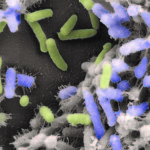Link to Pubmed [PMID] – 13129645
FEMS Immunol. Med. Microbiol. 2003 Sep;38(2):113-6
A polymerase chain reaction (PCR)-based procedure without any cloning step was developed for a rapid mutagenesis/deletion of chromosomal target genes in Yersinia. For this purpose, a PCR fragment carrying an antibiotic resistance gene flanked by regions homologous to the target locus is electroporated into a recipient strain expressing the highly proficient homologous recombination system encoded by plasmid pKOBEG-sacB. Two PCR procedures were tested to generate an amplification product formed of an antibiotic resistance gene flanked by short (55 bp) or long (500 bp) homology extensions. Using this method, three chromosomal loci were successfully disrupted in Yersinia pseudotuberculosis. The use of this technique allows rapid and efficient large-scale mutagenesis of Yersinia target chromosomal genes.

